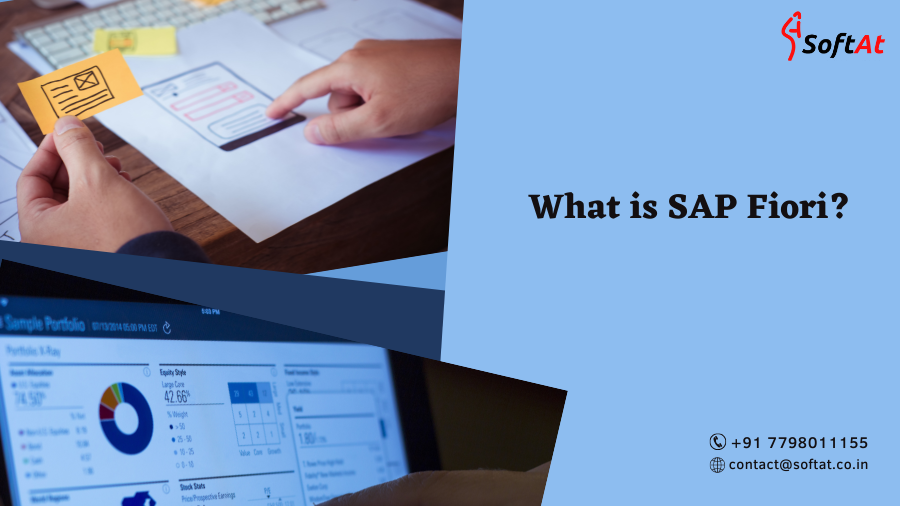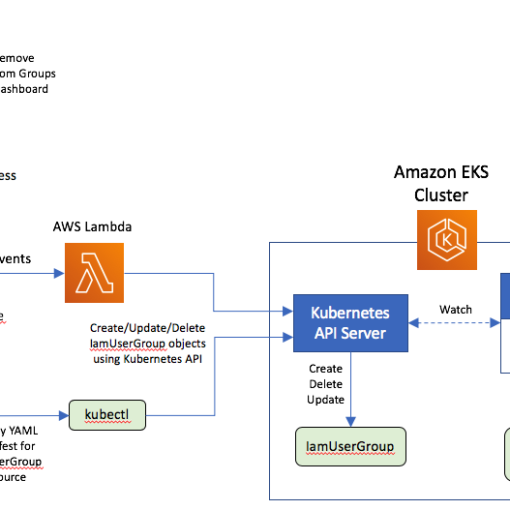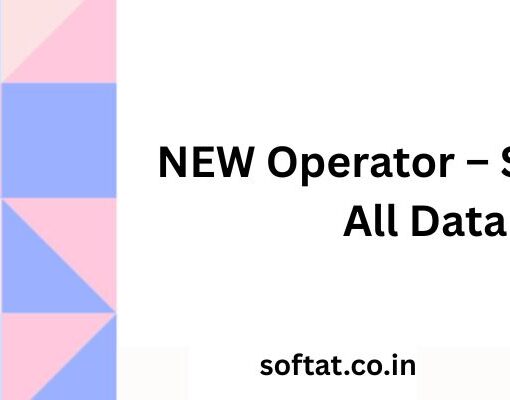SAP Fiori is the user interface or user experience (UX) that supplements and can replace the SAP GUI. This streamlined application uses tiles to encapsulate standard tasks, such as approving purchase requisitions, viewing sales orders, and approving timesheets. What is SAP Fiori? This is still a question worth asking as the UX is evolving and getting more sophisticated since its initial launch in 2013.
What is SAP Fiori?
Fiori is a streamlined application, delivering a role-based user experience that can be personalized across all lines of business, tasks, and devices. It uses tiles to encapsulate standard tasks like viewing sales orders or approving timesheets. Based on customer input, SAP devised the SAP Fiori UX with user-friendliness and ease of use in mind. The UX also provides mobile deployment capabilities so users can work without needing access to a computer.
Ultimately, there’s a night and day difference between the SAP GUI and SAP Fiori UX. While the older GUI was bulky and hard to learn or train on, SAP Fiori has the seamless movements and controls you would expect out of any mobile application. The screens are simple, customizable, and modern, and there are none of the unnecessary tabs and fields the previous UX had.
SAP Fiori 2.0
SAP Fiori 2.0 launched in October 2016 as an update to Fiori adding UX functions that were missing in the first version, e.g. enhanced navigation, multi-application management, and proactive system notifications. Developed as the latest evolution for SAP HANA and S/4HANA, version 2.0 offers a new visual design that can adapt Fiori UIs to corporate identities. Other features introduced in SAP Fiori 2.0 include an Overview Page, which streamlines information flow, List Reports, Object Pages, and a Launchpad for navigating apps. The Launchpad enables querying for apps that may be required for new processes and new ways to organize tools intuitively. A Viewport expands users’ desktops to the right and left. SAP Fiori 3.0 is the new target design being planned from SAP, which evolves the design system to fully support the Intelligent Suite.
The Benefits of Fiori
What are some SAP Fiori benefits? Users report increased productivity with Fiori. Research reveals that Fiori delivers a 64% reduction in time needed to complete a task compared to SAP GUI. It’s simpler and easier to learn, so it drives a strong adoption rate and cuts training time. Employees tend to get less frustrated with Fiori.
SAP Fiori offers more intuitive workflows that feature business logic instead of SAP logic. Users who are not experts in SAP find this easier to use. People can move around in the organization more readily. They don’t have to retrain on SAP to switch roles. The UX also results in improved mobility. In contrast to the mouse-and-keyboard structure of the SAP GUI, Fiori-based applications are usable by mobile employees on a variety of device types.
On the application development side, users of SAP Fiori on HANA find less need to build their own tools. This is partly the result of the expanding Fiori library. In addition, the SAP/Apple partnership provides a range of preset app options.
SAP Fiori Architecture
Developed to meet new enterprise IT criteria, SAP devised Fiori to be available on-demand in the cloud and on-premises. Fiori must also support multiple device form factors. Some architectural principles underpinning Fiori include:
- Central Access to apps through the SAP Fiori launchpad – supporting personalization, navigation and configuration
- Security with single sign-on (SSO) as well as role-based authentication and authorization
- Open Data Protocol (OData), which facilitates secure provisioning and data consumption
Fiori also embeds analytics into apps, if those are required. Developers can engage in custom development, so they are able to design, build and deploy SAP Fiori apps rapidly. They achieve this goal by using Fiori’s enterprise-ready UI development toolkit, which is based on SAPUI5 with support for HTML5 and JavaScript. This makes possible app extensibility, with possible enhancements to apps through the SAP Web IDE and its templates.
As a result of this architecture, SAP Fiori is not tied to a specific device, session, or user. Fiori app users can start a task and save it in an incomplete form. Later, they can resume working on it from a different device. The app automatically saves data asynchronously. Users can even hand off partially completed tasks to one another.
Deployment Options
When it comes to SAP Fiori deployment options, admins have five basic choices: Fiori Front End Server (FES) embedded deployment, FES hub deployment, gateway embedded, gateway hub, and cloud. Each approach suits a specific set of requirements and SAP landscape preferences.
- FES embedded deployment, where Fiori is embedded in a single SAP landscape, is the simplest deployment option9. It is best for situations where there is a single Fiori instance running.
- FES hub deployment, which bundles the Fiori UI components, SAP Launchpad and SAP Gateway. Business logic and traditional UIs stay on the back end, so you can integrate multiple back end systems like SAP CRM and SRM.
- Gateway embedded, where the SAP Gateway is embedded in the back end, which makes it possible to integrate cloud FES instances with a cloud connector.
- Gateway hub, here SAP Gateway serves as a hub – making it easy to connect the backend with FES in the cloud
- SAP Fiori Cloud, with FES in the cloud on a standalone basis. It connects to back end systems that are on-premises.
Launchpad Configuration
SAP Fiori Launchpad configuration involves a shell that hosts SAP Fiori apps. At the same time, the shell provides the apps with configuration, navigation, and personalization services, along with embedded support. The result is tile-based information architecture. Each tile represents a business application, which can be launched by the user. Tiles display according to the user’s role and indicate live statuses, such as how the number of open tasks.
SAP GUI vs. Fiori
Ultimately, how can you compare the SAP GUI vs. Fiori? Fiori offers a number of clear benefits over SAP GUI, including better productivity and multi-device task workflows. In architectural terms, Fiori gives you the advantage of RESTful APIs, which are more fluid and easily connected than traditional SAP application integration tools.
Fiori is projected to replace SAP GUI, particularly in organizations that are migrating to HANA and S/4HANA. This is mostly the result of a better UX overall, developed to enhance the new database. The older GUI is comparatively bulky and difficult to learn (or train). Fiori is built in HTML5. As a result, it has the kind of seamless movements and controls you expect from a modern mobile app. The screens are simple and clean in design, matching what users expect from today’s applications.
Moving forward with SAP Fiori
SAP Fiori is simple for users, but behind the scenes, it can be challenging to set up and manage. Configuration and gateways require expertise to navigate the pitfalls of the project as well as being able to identify the additional stakeholders needed for mobilizing your applications. Additionally, if you’re harnessing SAP Fiori as part of a more complex project, such as an SAP HANA migration, an SAP-certified partner like Secure-24 can ease the transition and help optimize your new IT landscape.
What is the difference between SAP and SAP Fiori?
SAP and SAP Fiori are related but distinct components within the SAP ecosystem. Here’s a breakdown of their differences:
- SAP: SAP (Systems, Applications, and Products in Data Processing) is a leading enterprise resource planning (ERP) software that provides integrated business solutions to manage various aspects of an organization, such as finance, human resources, sales, procurement, inventory, and more. SAP is a comprehensive suite of applications designed to streamline business processes, enhance efficiency, and provide valuable insights through data analytics.
- SAP Fiori: SAP Fiori is a user experience (UX) and design framework developed by SAP to improve the user interface (UI) and user experience of SAP applications. It focuses on providing a modern, intuitive, and consistent user interface across different devices, including desktops, tablets, and smartphones. SAP Fiori aims to make SAP applications more user-friendly, responsive, and visually appealing.
Key differences between SAP and SAP Fiori:
Scope: SAP is the entire suite of ERP applications that cover various business functions, while SAP Fiori is a design framework focused on improving the user experience for SAP applications.
Functionality: SAP offers a wide range of functionalities to manage business processes across departments, while SAP Fiori enhances the user interface and user experience of specific SAP applications.
User Experience: SAP’s traditional user interfaces have been criticized for their complexity and lack of user-friendliness. SAP Fiori addresses these concerns by providing a more modern, streamlined, and intuitive user experience.
Device Support: SAP Fiori is designed with responsive design principles, allowing it to adapt and provide an optimal user experience on various devices, including desktops, tablets, and smartphones. Traditional SAP interfaces might not be as well-suited for mobile devices.
Adoption: SAP Fiori is not a separate application or module but a design language and set of guidelines. It can be applied to specific SAP applications to enhance their user experience. SAP customers can choose to adopt SAP Fiori and apply it to their existing SAP applications.
In summary, SAP is the overarching ERP software suite that covers a wide range of business processes, while SAP Fiori is a design framework focused on improving the user experience of specific SAP applications. By incorporating SAP Fiori, SAP aims to make its applications more user-friendly, visually appealing, and accessible across different devices.





